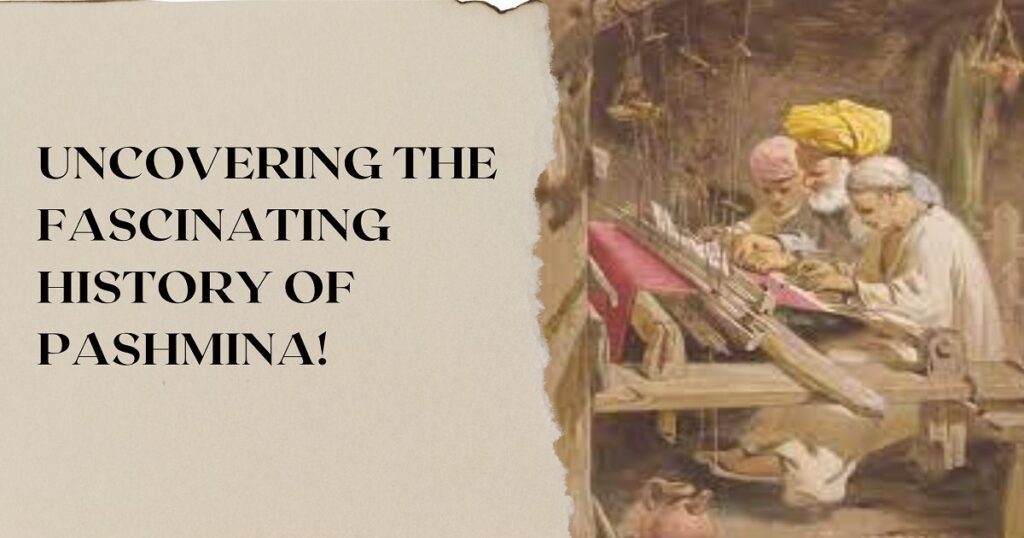
When it comes to luxury fashion items, few can compete with the timeless elegance of a pashmina shawl. As a luxurious and versatile accessory, pashmina shawls have been a staple of high-end fashion for centuries. But what is the history behind this iconic item? How did the pashmina shawl come about? In this blog post, we’ll take a deep dive into the fascinating history of pashmina shawls and uncover the secrets behind this timeless fashion accessory.
History of Pashmina Shawls
Pashmina shawls have been a part of high-end fashion for centuries. The origin of the pashmina shawl can be traced back to the Himalayas, where the wool used to make the shawls is still sourced today. The term “pashmina” is derived from the Persian word “Pashm”, which translates to “wool”. The term was used to refer to a type of fine wool that was sourced from the high-altitude goats of the Himalayas.
The shawls made from this wool were highly sought after for their luxurious feel and delicate texture. The wool was hand-spun by artisans and woven into shawls that were then dyed in vibrant colors. The shawls were highly prized for their warmth and lightness, making them ideal for the harsh Himalayan climate.
The pashmina shawl made its way from the Himalayas to the courts of the Mughal Empire. The shawls were a favorite of the Mughal royalty and were seen as a sign of wealth and status. The Mughal Empire was a major trading hub, and the shawls were exported to other parts of the world, making them a global fashion phenomenon.
Today, the pashmina shawl is still a popular fashion accessory. The shawls are now available in a variety of colors, patterns, and sizes. The shawls are still made from the same fine wool of the Himalayan goats and are still hand-woven and dyed by skilled artisans.
Ancient History
The history of the pashmina shawl dates back to ancient times. The shawls were a popular item among the nomadic tribes of the Himalayas, who prized the shawls for their warmth and lightness. The shawls were also used as a form of currency and were exchanged as a form of payment.
The pashmina shawl was also popular among the Tibetan people, who used the shawls to wrap around their heads to protect them from the cold. In Tibetan culture, the pashmina shawl was a symbol of power and was often given as a gift to honor someone of high status.
The pashmina shawl was also popular in India. The shawls were a symbol of wealth and were only worn by the upper classes. The shawls were highly sought after for their luxurious feel and delicate texture. Women would often drape the shawls over their shoulders as a symbol of status and elegance.
Luxury Item
The pashmina shawl has been a staple of luxury fashion for centuries. The popularity of the item has never waned, and the shawls are still highly sought after today. The shawls are now available in a variety of colors, patterns, and sizes, and can be found in high-end boutiques and department stores.
The shawls are often used as a symbol of luxury and sophistication. Many celebrities and style icons have been seen wearing pashmina shawls, making them a coveted item among fashionistas. The shawls are also popular as a wedding accessory, with many brides choosing pashmina shawls to add an element of elegance to their look.
The pashmina shawl is also a popular item for special occasions. The shawls can be draped around the shoulders for a classic look, or worn as a scarf for a more casual style. The shawls are also popular as gifts and are often given as a token of love or appreciation.
Hand Made Shawl
The pashmina shawls of today are still made from the same fine wool of the Himalayan goats, and are still hand-woven and dyed by skilled artisans. The shawls are made using traditional methods that have been passed down for generations and can take up to a month to make.
The pashmina shawl is a timeless fashion accessory that has been around for centuries. The shawl is a symbol of luxury, elegance, and sophistication, and is still highly sought after today. With its long and fascinating history, the pashmina shawl is sure to remain a fashion icon for years to come.
